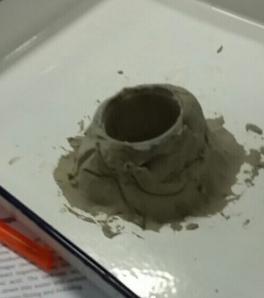Disasters was a topic that I had a great interest in as I studied this throughout geography in high school and therefore had a vast knowledge of many of the disasters which engaged me more in the sessions. It was interesting to learn about concepts such as the progression of vulnerability where certain ELDCs’ due to root causes are more vulnerable to certain dynamic pressures which in turn create unsafe conditions which mean they are less able to prepare for a disaster and to deal with the aftermath. Closely inspecting the role of international organisations provided me with some new knowledge as I could learn if they were politically neutral or not, what their priorities were and how they worked with governments within and between nations to effectively deal with short and long term impacts of disasters.
Furthermore, replicating experiments that can be done in classrooms was a useful insight into what considerations need to be made before conducting, for example, a volcano model with children as it may get very messy, especially with early years and first level, so this may be done as a whole class demonstration instead. The experiment we conducted in the workshop is shown via an accessible dropbox link below:
https://www.dropbox.com/s/u8kzgzwdceqmf2b/Snapchat-606110817.mp4?dl=0
We also looked at what can be done at a local, national and international level before, during and after a disaster, shown below:

Posters showing what can be done at a local, national and international level before, during and after a disaster occurs.
Moreover, working in groups we each presented a different disaster with a focus on a certain curriculum for excellence level where my group focused on typhoons with a view on teaching it to second level. This was an extremely useful experience as not only did it allow me to add to my existing subject knowledge but it also brought together different teaching ideas from different perspectives that I may not have thought of, for example, linking disasters to interdisciplinary learning through integrated arts with collages or models of volcanoes. It was also useful to gain teaching techniques when teaching a topic as sensitive as disasters as I learned that appropriate humour can be used to help children feel more comfortable with the disaster. It is also important to establish the seriousness of disasters but also bring the light-heartedness to it.
Learning about disasters has positively impacted how I feel about going on to teach this as many practical activities can be used to accompany the theory side of it to make it more enjoyable and engaging for children. Learning about each of the case studies that each group presented provided a real life context for children to relate to and it is required that I continue to refresh and update my knowledge on these case studies. I think it would be interesting to look at how different organisations have responded to disasters as Stout and Buono (n.d.) argued how seemingly “natural” disasters are actually social problems as many “government sponsored plans and programs of recovery and reconstruction tended to favour the interests of big business and the wealthy.” This would be useful in raising awareness to children of the social injustice and inequality that arises in our world as Stout and Buono (n.d.) continue to argue how lower class citizens and those of ethnic minority were not a priority in the aftermath of the recovery process. Therefore, it is important that I continue to research and find out more about such organisations and their roles in the aftermath of disasters.
References
Katrina A. Kathryn Stout, Ph. D. and Richard a. Dello Buono, Ph. D (n.d.) “Natural” Disasters are Social Problems: Learning from Katrina [Online] Available: http://moodle.uws.ac.uk/pluginfile.php/816810/mod_resource/content/1/Natural%20Disasters%20are%20social%20problems.pdf [Accessed: 5 November 2016].



